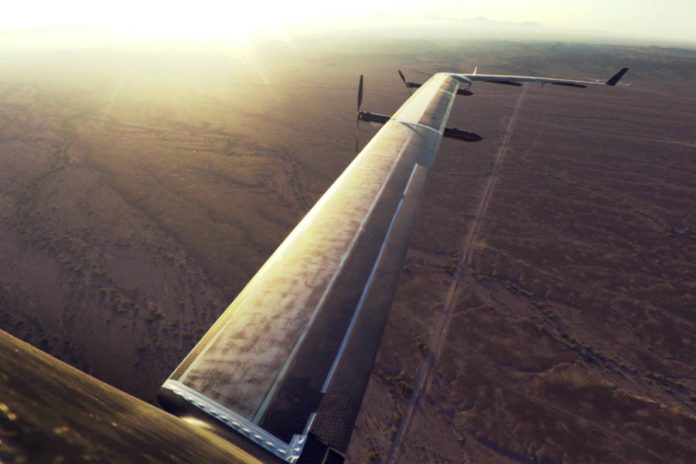
Facebook, Inc. (NASDAQ: FB) continues to advance toward a worldwide affordable internet service. On July, The company’s Connectivity Lab conducted the first official and full-scale test flight of the “Aquila” project, a solar-powered drone made to deliver wireless internet to remote populations.
The low-altitude flight lasted over 96 minutes, three times more than expected, and provided the Lab’s researchers with significant info regarding autopiloting, battery usage, basic aerodynamic handling, and crew training.
The test was a success and will help to achieve further development of the project before a full release happens in the following months, according to a post on the social media platform’s Code blog.
https://www.youtube.com/watch?v=eOez_Hk80TI
Aquila is basically a flying router
The company listed a drone-satellite as a part of Facebook’s Internet.org initiative in 2013. This program has the mission to deliver wireless internet to the remaining offline population -over 1.6 billion- by partnering with local data providers to offer basic plans across remote places where fiber optic cable installations are almost impossible due to its high costs.
CEO, Mark Zuckerberg also made remarks about the first stages of the Aquila during a Mobile World Congress Keynote in March 2013, stating Facebook had been working on building drones, lasers, and satellites as part of the Internet.org program.

The Connectivity Lab made several flying tests of a one-fifth scale version of the Aquila in the months before the full-scale flight. However, the recent experiment is an important milestone, according to the network’s press release from July.
Facebook made its own landing gear for the Aquila
Since Aquila doesn’t have traditional landing gear, the aircraft was attached to a dolly structure using four straps. Then, the crew accelerated the dolly to optimum speed.
The autopilot sent a signal to pyrotechnic cables cutters known as “Squibs” to allow the takeoff by cutting the straps when the device was ready to fly. A ground-based crew commanded the plain’s heading, altitude, airspeed, and a GPS-based route from a control computer.
The challenges Aquila’s engineers are facing
Although the test flight was a success, there’s still plenty of challenges ahead for the Aquila, mainly its size and solar power capacity.
Aquila must flight over three months without landing, with a night time altitude of 60,000 feet, and would require over 5,000 W of power to maintain flight to do so.
Also, the aircraft has a wingspan comparable to a commercial airliner’s, but it only weighs one-third of a Boeing 737, resulting in a slower flight speed of 25 mph at sea level, compared to the 50 mph a glider reaches.
For now, Internet.org is set to deliver internet access to over 100 countries as its primary goal and launched a Free Basics initiative alongside Airtel Africa in May to provide Nigeria with free web services dedicated to health, jobs, finance, and education.
Source: Facebook










